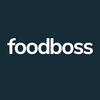The coronavirus outbreak and quarantine has made countless people take to cooking, channeling their inner chefs. Day after day however, cooking at home is beginning to feel more like a chore than an enjoyable task. If you keep craving pizza, you might be wondering whether it's safe to get it delivered, and how to minimize risk. This article will cover those questions.
Firstly, some good news: there is no scientific evidence that suggests food can transmit COVID-19 according to the Centers for Disease Prevention and Control and the Food and Drug Administration. To make you sick, the novel coronavirus needs to infiltrate your respiratory system via your mucous membranes. Your mouth is one mucous membrane, but food passes directly through your mouth to your stomach, where your stomach acid would kill it. With ongoing investigation and uncertainty, however, it is safest to consume cooked foods. Amidst spiking google searches of ‘coronavirus pizza delivery’, we can rest assured that our favorite takeout player is of the latter.
Restaurants have also added additional measures, in addition to their pre-existing regulations in place for years to avoid spreading influenza, norovirus, hepatitis A and other illnesses. One measure is through social distancing between workers to limit the spread of the novel coronavirus, which is the most efficient way of limiting spread. Employees are also instructed to wear masks and gloves at all times.
More importantly, however, is what can we do to limit spread risk?
The biggest threat of spread is through the in-person transaction between delivery people and customers. Direct contact or even vaporized air particles may be sufficient to infect someone. To counteract this, many large pizza chains and delivery platforms have created contactless food delivery options where the delivery person places your food outside your door, leaves, and notifies the package's arrival. Postmates, Uber Eats, Caviar, DoorDash, Seamless, and InstaCart, as well as others, have all implemented these policies. These platforms have also stated that they had instructed drivers and restaurants with the appropriate CDC guidance to ensure good hygiene. If you’re ordering from a third-party app that doesn’t have a contactless food delivery option, calling the driver in advance is always a viable backup alternative.
The second tip is to toss the pizza packaging and transfer the slices onto a plate. For the virus to infect through packaging, it must live on the packaging while being transported from the restaurant to your home. The risk of it making it there is “astonishingly low,” stated Paula Cannon, a professor of immunology at the University of Southern California. And while we hope that workers are wearing gloves and following protocol, there's no guarantee. And given that COVID-19 was detectable for up to 24 hours on cardboard - the go-to packaging for pizza, getting rid of the box is another method to lessen the risk of infection. Food that arrives in plastic has a higher likelihood of spreading due to the possible presence of the virus for up to 72 hours. In either case, using your plates and bowls is the safest way to handle the delivery.
Thirdly, ordering from trusted restaurants is advised at this time. If you’ve ever had food poisoning, or was simply not impressed with the hygiene of a restaurant, it is best to order from a place you trust. If you’d like to make sure, you can also call any restaurant that you plan to order from to ask specific questions about the measures they’ve implemented to curb the spread.
Of course, hand-washing remains one of the single most significant things people can do to protect themselves and others. After touching potentially contaminated surfaces, and before and after eating, wash your hands wholly with soap and water for at least 20 seconds. If soap and water aren’t available, use an alcohol-based sanitizer. This goes hand-in-hand with not touching your face with unwashed hands, as well as making sure to cough or sneeze into a tissue or elbow.
If you’re ordering food that requires utensils, it is also recommended to scrap them and use your own. “That’s an additional touchpoint that someone’s hands could be on,” Dr. Chapman stated. “If I can eliminate that as much as possible, I am taking that very, very low risk even lower.”
Lastly, tip the delivery person through the third-party app or with your card if you order directly from the restaurant, that way you can avoid contact and potentially spread the virus through cash.

